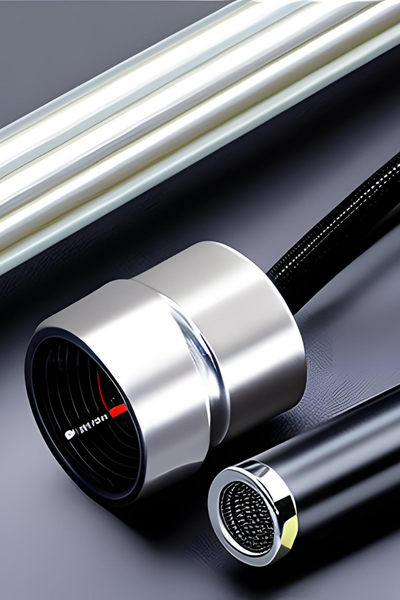Power Steering Hose Diagram: Understanding the Basics
Power Steering Hose Diagram. If you own a vehicle with power steering, it’s essential to understand how it works to keep it functioning at its best. One important aspect of power steering is the power steering hose, which is responsible for carrying fluid to and from the power steering pump and steering gear. In this article, we’ll discuss the power steering hose diagram and its role in the power steering system.
Power Steering Hose Diagram: What is Power Steering Hose?
The power steering hose is a component of the power steering system that connects the power steering pump to the steering gear. It is made of high-pressure, durable materials to withstand the high pressure of the power steering fluid. The hose is usually made of rubber, steel, or a combination of both.
Types of Power Steering Hoses
There are two types of power steering hoses:
- Pressure hose: The pressure hose carries high-pressure power steering fluid from the power steering pump to the steering gear.
- Return hose: The return hose carries low-pressure power steering fluid from the steering gear back to the power steering pump.

Power Steering Hose Diagram
To understand the power steering hose diagram, it’s essential to know the different components of the power steering system. The power steering system consists of the following components:
- Power steering pump
- Power steering fluid reservoir
- Pressure hose
- Steering gear
- Return hose
Here’s a breakdown of the power steering hose diagram:
Power Steering Pump
The power steering pump is responsible for generating the hydraulic pressure required to operate the power steering system. It is connected to the engine through a belt and is driven by the engine’s crankshaft. The power steering pump draws fluid from the reservoir and pushes it through the pressure hose to the steering gear.
Power Steering Fluid Reservoir
The power steering fluid reservoir is where the power steering fluid is stored. It is usually located near the power steering pump and has a dipstick to check the fluid level.
Pressure Hose
The pressure hose carries high-pressure power steering fluid from the power steering pump to the steering gear. It is usually connected to the power steering pump with a threaded fitting and to the steering gear with a hydraulic fitting.
Steering Gear
The steering gear is responsible for converting the hydraulic pressure from the power steering pump into mechanical force to turn the wheels. It is usually located on the driver’s side of the vehicle and is connected to the tie rod ends.
Return Hose
The return hose carries low-pressure power steering fluid from the steering gear back to the power steering pump. It is usually connected to the steering gear with a hydraulic fitting and to the power steering pump with a threaded fitting.
Symptoms of a Faulty Power Steering Hose
A faulty power steering hose can cause various symptoms, including:
- Leaking power steering fluid
- Squealing or whining noise when turning the steering wheel
- Difficulty turning the steering wheel
- Stiff steering wheel
How to Replace a Power Steering Hose
Replacing a power steering hose can be challenging, and it’s recommended to leave it to a professional mechanic. However, if you have experience working with cars, here are the basic steps to replace a power steering hose: Power Steering Hose Diagram
- Lift the vehicle and locate the power steering hose.
- Drain the power steering fluid from the system.
- Remove the old power steering hose.
- Install the new power steering hose.
- Refill the power steering fluid and bleed the system.
Conclusion
The power steering hose plays a crucial role in the power steering system, and understanding its function and diagram is essential for keeping your vehicle running smoothly. Regular maintenance and inspection of the power steering system can prevent costly repairs and ensure safe driving. Power Steering Hose Diagram
FAQs
Q: What is a power steering hose?
A: A power steering hose is a flexible rubber or metal tube that carries power steering fluid from the power steering pump to the steering gear. It’s a critical component of the power steering system that ensures smooth and efficient steering operation.
Q: What are the signs of a faulty power steering hose?
A: Symptoms of a faulty power steering hose may include difficulty turning the steering wheel, whining noise coming from the power steering pump, leaking fluid underneath the vehicle, and reduced power steering performance.
Q: How do I check the power steering hose for leaks?
A: To check for leaks, first, inspect the power steering fluid level in the reservoir. If the level is low, it could indicate a leak in the power steering hose. Next, look for any signs of fluid leakage around the power steering hose connections or fittings. If you notice any signs of leakage, it’s essential to have the power steering hose inspected and replaced if necessary.
Q: How long does a power steering hose last?
A: The lifespan of a power steering hose varies depending on various factors such as the type of material used, driving conditions, and maintenance. Typically, a power steering hose can last anywhere from 50,000 to 100,000 miles. However, it’s important to have the power steering hose inspected regularly and replaced if necessary to ensure proper steering operation.
Q: Can I replace a power steering hose myself?
A: It’s possible to replace a power steering hose yourself if you have the necessary tools, knowledge, and experience. However, it’s recommended to have a professional mechanic perform the replacement to ensure proper installation and prevent any potential safety hazards.
